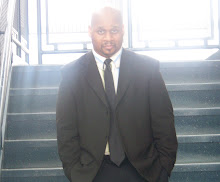If nearly 3 in10 adults that have completed post-secondary education are living below the poverty line, does this mean the protective benefits of education are diminishing? The rise of the educated and impoverished in America should be cause for great concern for every man, woman, and child, but is it?
Why do adults with post-secondary education make up such a large and growing proportion of the poor population? Well, in part, because the educational composition of the overall population is changing: In essence, a more highly educated poor population reflects the trend towards a more highly educated population in general. From 1981 to 1992, there was a rapid increase in the total number of working-age adults with PSE rising from 3.6 million to 6.8 million. As a result, 40% of the working-age population achieved some form of post-secondary qualification. Even without an increase in the poverty rate, the number of educated poor would have increased substantially because of this changing composition. Additionally, part of the increase in the number of poor working-age adults with post-secondary credentials is the result of an increasing poverty rate among this highly educated group, which climbed from 7% in 1981 to 21% in 2009.
It is surprising that more than 800,000 working-age adults with post-secondary education are--in fact--poor. It challenges our common fundamental belief system about the benefits of higher education. Indeed, we are left to inquire, how could anyone with a post-secondary education be impoverished?
In 2000 for example, 22% of poor working-age adults had obtained a post secondary degree. There was a debate about whether these students were "in fact, poor." Critics argued that students were "not really poor" because their poverty is "temporary"; they often receive some parental support, and many share living expenses with other students. True, some students fit this criterion; many, however, do not. Among those with a post-secondary education who were "impoverished students," 1 in 4 (25%) was between the ages of 35 and 64, and 1 in 5 (22%) had dependent children.
Among poor educated adults who were employed between 2000-2009, the most common occupations were in personal services, food and beverage preparation and other services (17%); clerical occupations (14%); and sales (11%)--this employment sector is beset by high levels of part-time employment, temporary work, and minimum wage. This is also true at the doctoral level--where there are more than 5,000 janitors in the U.S. with Ph.D.’s.
Conversely, contrary to popular belief, it is becoming increasingly clear that earning a Bachelor’s Degree, Master’s Degree or a Ph.D. does not guarantee a job, let alone one with good pay. As elected officials continue to focus their attention on tax breaks for the wealthy, repealing health care and fear mongering, they have moved further away from ending unemployment and poverty in the Republic, and it would do them well to consider the following question which a growing number of citizens both adult and youth are beginning to ask: “What is the use of further training and higher education if there are too few good paying employment opportunities available?”
“Progressives will bring balance to the Republic.”
Anthony P. Johnson
Thursday, February 3, 2011
Subscribe to:
Post Comments (Atom)

I encourage entrepreneurship, simply because the continuous movement of this capitalist society is to provide to the inherited wealthy and minimize anyone who does not fall into the forementioned category.
ReplyDelete